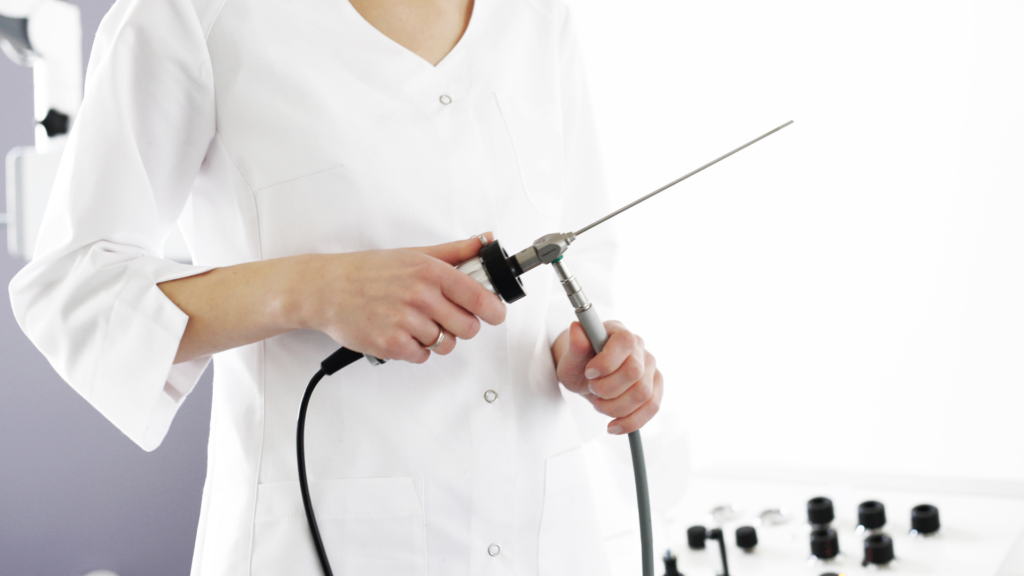
Obesity is a civilization disease that affects a large part of society, and the problem here is not only in the lack of quality of life, but the so-called concomitant diseases of obesity, such as hypertension, high risk of heart attack and stroke, diseases of the joints, spine, depression, sleep apnoea or respiratory distress syndrome.
Hospital statistics show that obese patients have faced much more severe consequences of covid during the pandemic.
In addition to the dietary and psychological treatment of obesity, and increasingly common surgical procedures in bariatrics, such as sleeve gastrectomy and gastric bypass, a relatively safe, fast and reversible procedure called endoscopic gastric reduction (ESG) is a new development in bariatrics in the fight against obesity
Endoscopic Sleeve Gastroplasty (ESG) an innovative non-surgical weight-loss procedure in the minimally invasive treatment of obesity.
Is endoscopic gastric sleeve a safe procedure?
Endoscopic stomach reduction is a safe and much more less invasive treatment compared to laparoscopic bariatric surgery.
It is a fully reversible procedure – the inserted sutures reducing the stomach’s capacity are cut out endoscopically in the future after the successful weight loss, so your stomach can be returned to its original shape.
Why do patients lose weight after endoscopic gastric reduction?
Endoscopic gastric reduction affects a patient’s weight in several ways:
• a smaller stomach can only hold a much smaller portion of food, which limits the amount of food you can eat at a single meal,
• even a small amount of food quickly fills the reduced stomach, so the patient feels satiated after eating a small portion of food,
• the stomach after endoscopic suturing has the shape of a rue/ banana, the food the ingested food does not remain in it, which shortens the digestion time and makes less nutrients from food are absorbed into the blood.
What should you pay attention to after endoscopic stomach reduction?
To lose weight effectively and permanently after endoscopic gastric reduction, you should follow the diet plan and medical recommendations. It should be born in mind, the treatment itself does not guarantee success. A patient who decides to undergo this procedure must be aware that achieving the right weight will cost him a lot of his own effort.
After endoscopic stomach suturing, it is important to be physically active and eat healthily. Only a complete change of lifestyle can bring the desired success and minimalize obesity-related diseases.
What does life look like after endoscopic gastroplasty?
Recovery from endoscopic gastric suturing is very fast. Patients leave the hospital on the same or on the second day after the treatment and usually return to work shortly afterward. Right after the treatment, you can bend down, pick up light things, climb stairs and perform all other daily activities. There is no need to rest in bed for a long time, on the contrary, you should start implementing the exercise plan agreed with your doctor as soon as possible.
The biggest change in a patient’s life after endoscopic gastric reduction is a new healthy diet. After the procedure, for the first 2 weeks, you should absolutely follow a liquid diet, possibly additionally strengthening yourself with high-protein products such as Nutridrinks.
Only after 14 days, soft products are introduced (e.g. boiled carrots, mashed potatoes, mashed banana). Dieticians at KCM Clinic discuss in detail with the patient a diet plan for the next 7 weeks with the gradual introduction of solid foods and healthy eating. It is important to eat meals in small portions, carefully chewing them.
It is forbidden to snack between meals. Food should be healthy, as little processed as possible, that is, instead of canned fish, you should choose, for example, fresh steamed cod fillet.
For the first month and subsequent stages up to 7-8 weeks, it is necessary to strictly follow the menu recommended by your doctor and dietitian. This is very important as eating inappropriate foods can cause stomach aches, nausea, heartburn and vomiting, and too little weight loss.
What are the biggest benefits of endoscopic gastric reduction in the treatment of obesity?
A huge advantage of endoscopic stomach reduction is the small invasiveness of this procedure combined with its high efficiency. This is the most effective non-surgical treatment of obesity.
Due to the fact, that this procedure is performed endoscopically, there is no need to make any incisions either on the patient’s skin or in the stomach. During the procedure, the endoscopic surgeon inserts a vide-gastroscope through the throat into the stomach with an OverStitch device inserted through the endoscope channel and then uses it to suture the stomach from the inside, reducing 60-80% of its volume.
Due to the small invasive endoscopic approach, the reduction of the stomach is much safer than laparoscopic bariatric surgery, and the patient quickly recovers after it. Another great advantage of endoscopic gastric suturing is the reversibility of this procedure. Sutures can be removed, and the stomach returns to its original size.
What are the contraindications for endoscopic sleeve gastroplasty?
Obese patients who want to undergo endoscopic gastric reduction must undergo comprehensive diagnostics, excluding contraindications for the procedure and for general anesthesia. In order to be qualified for the procedure, video gastroscopy must be performed along with a bacterial test, the so-called Helicobacter Pylori Test.
Patients with a positive test result must undergo antibiotic treatment, patients with signs of stomach inflammation – drug therapy. Contraindications to the endoscopic gastric suturing procedure include peptic ulcer disease, cancer or its increased risk, chronic use of blood-thinning drugs, planned pregnancy during 12 months.
What are the effects of endoscopic gastroplasty?
The results of the endoscopic gastroplasty procedure vary depending individually from patient to patient. It should be kept in mind that the results obtained will be better if the patient follows the doctors and dietary recommendations regarding changing eating habits, as well as lifestyle.






